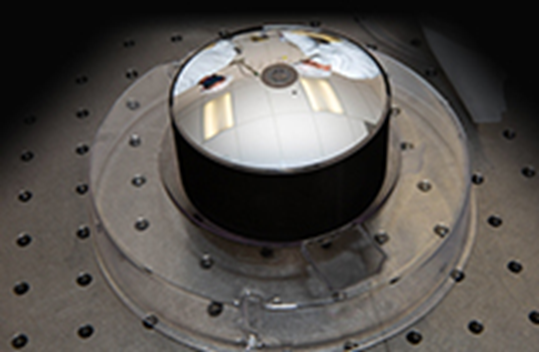Monolithic telescopes fabricate a reflective telescope into a single silica substrate. This approach provides exceptional mechanical stability because the relative position of the mirrors is permanently polished into a monolithic substrate and is inherently temperature insensitive due to the low CTE of fused silica (0.5 ppm/K). Once fabricated, monolithic telescopes can be taken for granted because the mirrors will always be aligned, even after subject to extreme force like during launch into space. There is a need for telescope designs that achieve good image quality at wide field of view compared to conventional Cassegrain designs.
This invention achieves both a wider field of view and faster f-number within a monolithic substrate by incorporating an aspheric convex refractive first surface and a planar aspheric field corrector surface on the final refractive surface. These two refractive surfaces work in conjunction with a concave aspheric primary and convex aspheric secondary mirror (e.g. Cassegrain type) to improve high-order off-axis aberration correction (e.g. coma, astigmatism) thereby permitting wider fields of view and at faster f-numbers. The additional refractive surfaces are fabricated into the same monolithic substrate.
- Excellent mechanical and thermal stability.
- Achieves good image quality at wide field of view and low f#.
- Reduced complexity and cost compared to optomechanical approaches.
- No need for adjustment or focusing.
- Compatible with space deployments and operations.
- Can be used in any application requiring fixed reflective optical elements.
- Space situational awareness and navigation
- Remote sensing
Current stage of technology development: TRL4-5
LLNL has filed for patent protection on this invention.
U.S. Patent Application No. 2023/0288692 Widefield Catadioptric Monolithic Telescopes published 9/14/2023


